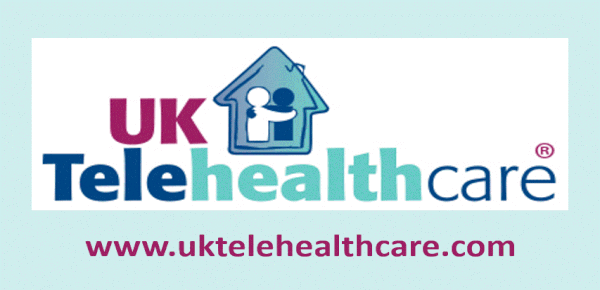 Amazon keeps trying to integrate healthcare and make One Medical work, using Pharmacy as leverage. Like CVS, Walmart, and Walgreens, Amazon succumbed in 2022 to the Gold Rush of buying up a health clinic network and attempting to integrate primary care delivery into its retail model–after stumbling badly and failing with Amazon Care (2019). While the former have either ditched (Walmart), pivoted (CVS–Oak Street), or spun off their primary care providers (Walgreens–VillageMD/Summit Health), Amazon is testing yet another integration with One Medical, their first being with Amazon Prime.
Amazon keeps trying to integrate healthcare and make One Medical work, using Pharmacy as leverage. Like CVS, Walmart, and Walgreens, Amazon succumbed in 2022 to the Gold Rush of buying up a health clinic network and attempting to integrate primary care delivery into its retail model–after stumbling badly and failing with Amazon Care (2019). While the former have either ditched (Walmart), pivoted (CVS–Oak Street), or spun off their primary care providers (Walgreens–VillageMD/Summit Health), Amazon is testing yet another integration with One Medical, their first being with Amazon Prime.
In its latest tweak, Amazon is delivering limited onsite pharmacy services via a dispensing kiosk to a group of five One Medical offices in the Los Angeles metro. Now Amazon never calls it a test–one has to get about halfway down their release to discover those kiosks won’t be installed till December–but it’s obviously one, with a rollout to other undetermined One Medical offices promised in the sweet bye-and-bye of 2026. The kiosks will dispense common prescription meds in a four-step process: prescription written, sent to Amazon Pharmacy, patient opts for in-office kiosk pickup and payment using their mobile phone to check it out in the Amazon Pharmacy app, and checks it out using a QR code at the kiosk.
Using these five locations (Beverly Hills! West LA!) is an adequate feasibility test, but doesn’t address the piously phrased rationale of 25% of neighborhoods as “pharmacy deserts” and where even in non-desert areas, 51% of patients report delays in filling prescriptions.
The kiosks will be storing basically common Rx meds such as antibiotics, blood pressure medications, and inhalers.
Where this picture isn’t as revolutionary as my friend Sergei Polevikov maintains in his latest Substack essay (subscription required–and you should; also partially on LinkedIn), it’s another kick in the head for the traditional pharmacy retailers and the PBMs. They are already getting boot impressions by the Hims & Hers virtuals and Big Pharma on GLP-1 and ‘favored nation’ DTC deals. On one side, it reduces friction by making it onsite and easy. But suppose the kiosk doesn’t have my med or it’s out of stock. What do I do once the script is sent and I need to change it? This is also appealing to a younger and/or tech-savvy segment who live on their phone and Amazon apps. Suppose I’m an older patient and apps/QR codes do nothing but confuse me? For Amazon, what about the cost of kiosk installation, cleaning, stocking, monitoring, just like those telehealth kiosks from Forward (CarePods), Higi, and way back HealthSpot Station. They were the future–for five minutes. Apparently there’s also a little regulatory issue of self-dealing referral (hat tip to LinkedIn commenter Ajay Kumar Gupta). Also Healthcare Dive
VillageMD continues to shrink. The formerly free-standing and co-located Walgreens clinic unit, spun off into a standalone company by Sycamore Partners while I was on medical leave (FierceHealthcare 28 Aug), has sold 32 Texas primary care clinics to Harbor Health, a primary care group and payvider in the Austin area. This adds San Antonio, El Paso, and Dallas as well as more Austin locations. Forbes From a significant almost-national primary and specialty care group, VillageMD is devolving into pieces for sale. One wonders about the extensive Summit Health/CityMD operation, very much tied in with Hackensack Meridian Health that dominates northern New Jersey, and disruption. (Disclosure: my family and I are Summit Health patients) In other news, Tim Wentworth was replaced as CEO by Mike Motz, from another Sycamore portfolio company. Wentworth remains as director for the time being, undoubtedly working out his retention and various payouts.
Rock Health breaks the cheerful news that Q3 digital health is an improvement over a dismal 2024 a/k/a 2019. YTD is $9.9 billion, exceeding the $8.4 billion raised through 2024 Q3. Deal size is also trending up: $28.1 million, increasing from $20.4 million in 2024. Where it’s still wobbly is middle-stage investment and anything with a Series letter. Rounds of $100 million plus thrived, with 19 of them accounting for 40% and $3.8 billion of 2025 YTD total funding. I won’t be doing my usual dive into their numbers due to time constraints, but Healthcare Dive summary will do. Rock Health’s Q3 report, usually putting the best foot forward, is weirdly downbeat, calling it ‘signals out of sync’.
Way out of sync is the continuation of the partial Federal government shutdown, with no mercy on telehealth services and the donkeys doing what donkeys do…refuse to move.
I’ll be on a short hiatus with no new articles until the week of 27 October.













Most Recent Comments